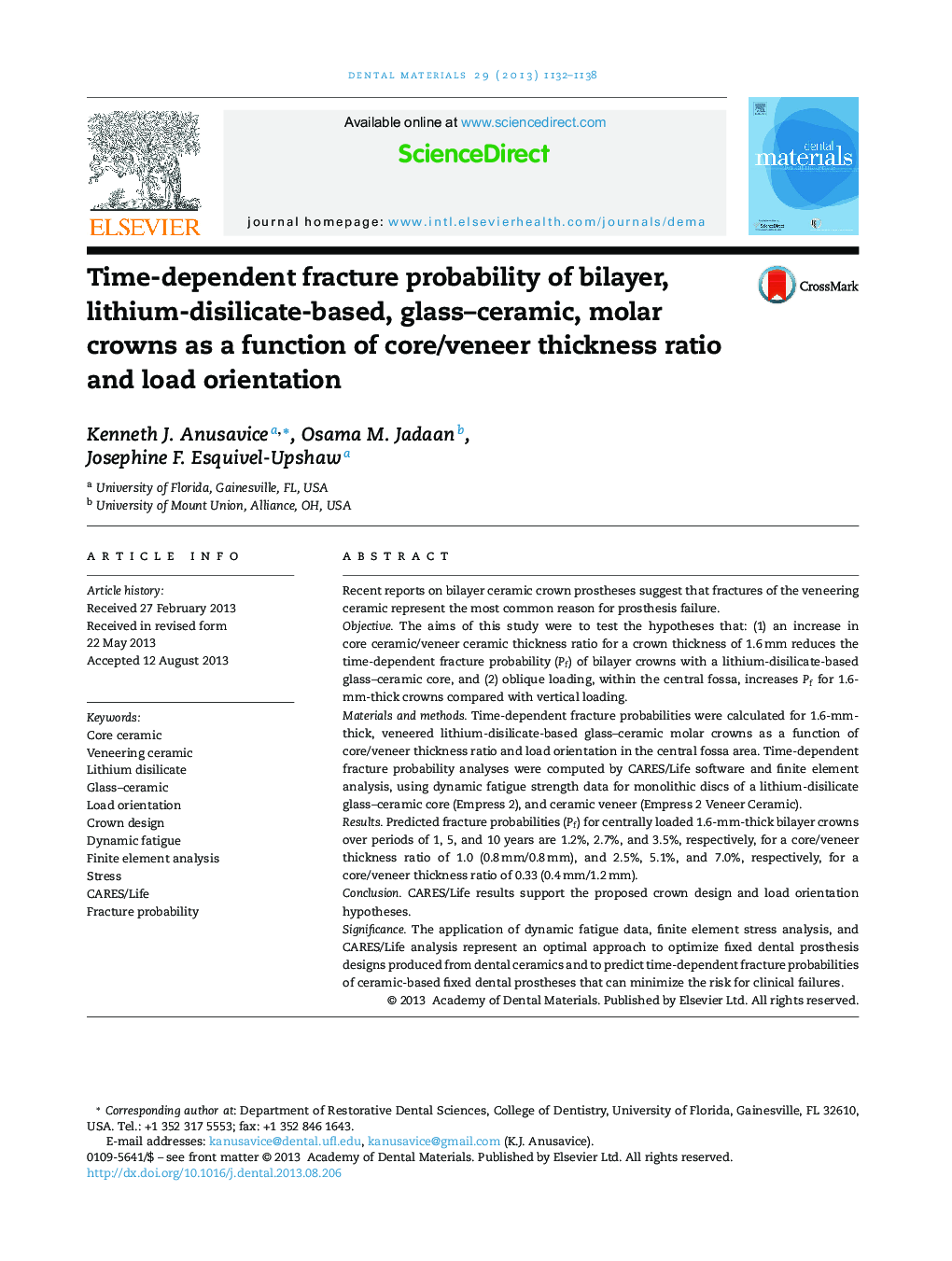| کد مقاله | کد نشریه | سال انتشار | مقاله انگلیسی | نسخه تمام متن |
|---|---|---|---|---|
| 1421151 | 986396 | 2013 | 7 صفحه PDF | دانلود رایگان |

Recent reports on bilayer ceramic crown prostheses suggest that fractures of the veneering ceramic represent the most common reason for prosthesis failure.ObjectiveThe aims of this study were to test the hypotheses that: (1) an increase in core ceramic/veneer ceramic thickness ratio for a crown thickness of 1.6 mm reduces the time-dependent fracture probability (Pf) of bilayer crowns with a lithium-disilicate-based glass–ceramic core, and (2) oblique loading, within the central fossa, increases Pf for 1.6-mm-thick crowns compared with vertical loading.Materials and methodsTime-dependent fracture probabilities were calculated for 1.6-mm-thick, veneered lithium-disilicate-based glass–ceramic molar crowns as a function of core/veneer thickness ratio and load orientation in the central fossa area. Time-dependent fracture probability analyses were computed by CARES/Life software and finite element analysis, using dynamic fatigue strength data for monolithic discs of a lithium-disilicate glass–ceramic core (Empress 2), and ceramic veneer (Empress 2 Veneer Ceramic).ResultsPredicted fracture probabilities (Pf) for centrally loaded 1.6-mm-thick bilayer crowns over periods of 1, 5, and 10 years are 1.2%, 2.7%, and 3.5%, respectively, for a core/veneer thickness ratio of 1.0 (0.8 mm/0.8 mm), and 2.5%, 5.1%, and 7.0%, respectively, for a core/veneer thickness ratio of 0.33 (0.4 mm/1.2 mm).ConclusionCARES/Life results support the proposed crown design and load orientation hypotheses.SignificanceThe application of dynamic fatigue data, finite element stress analysis, and CARES/Life analysis represent an optimal approach to optimize fixed dental prosthesis designs produced from dental ceramics and to predict time-dependent fracture probabilities of ceramic-based fixed dental prostheses that can minimize the risk for clinical failures.
Journal: Dental Materials - Volume 29, Issue 11, November 2013, Pages 1132–1138